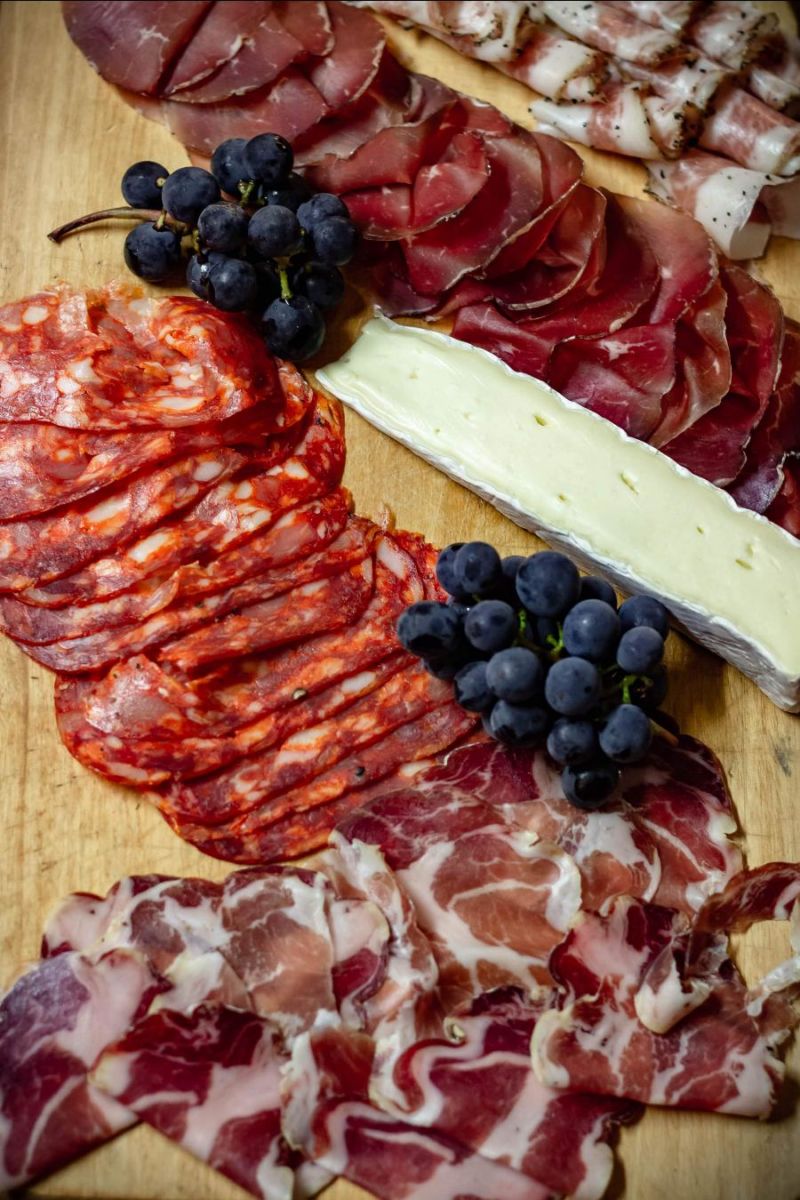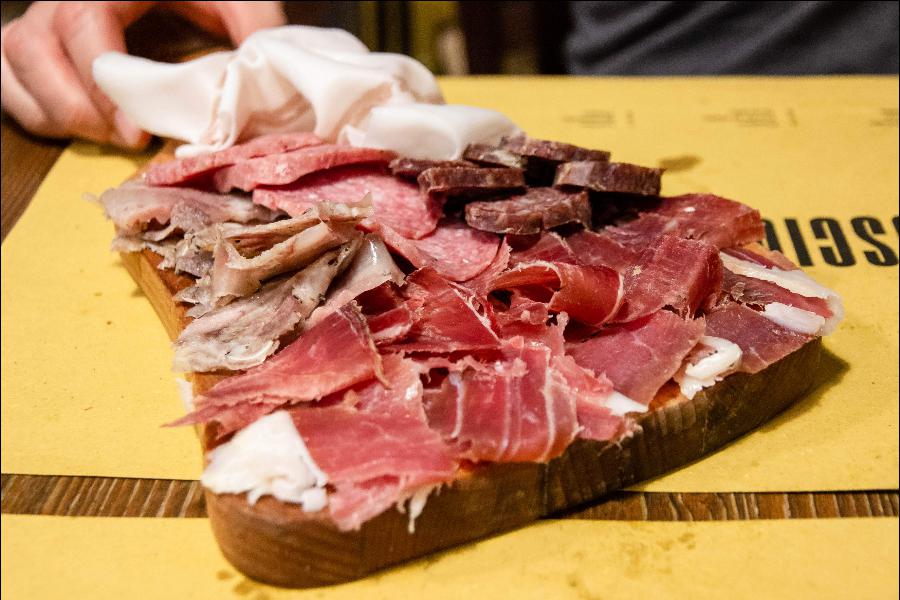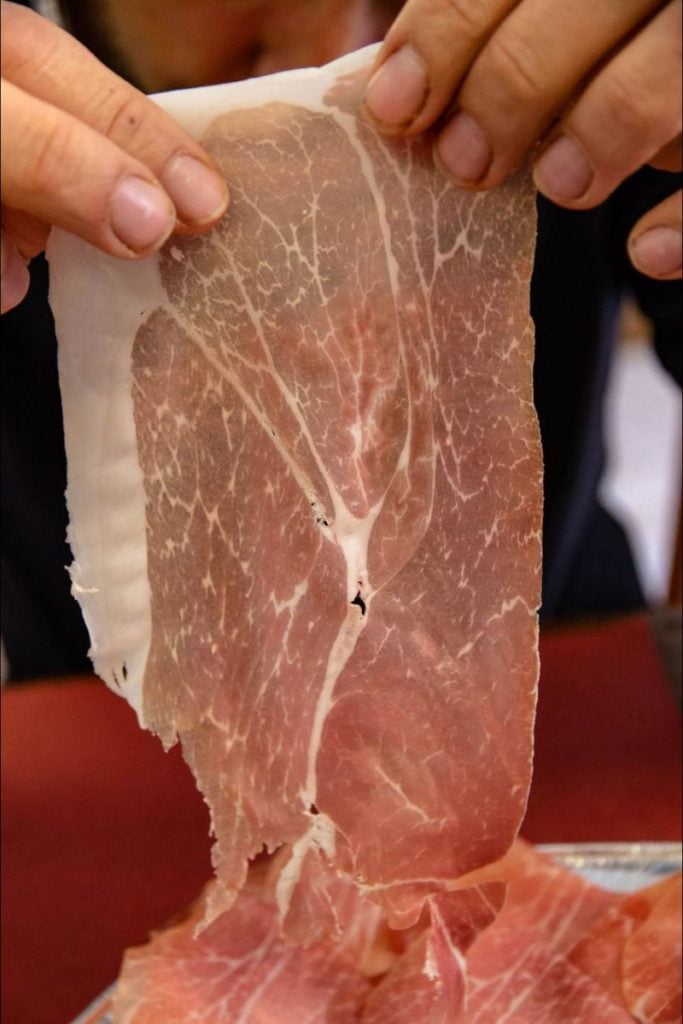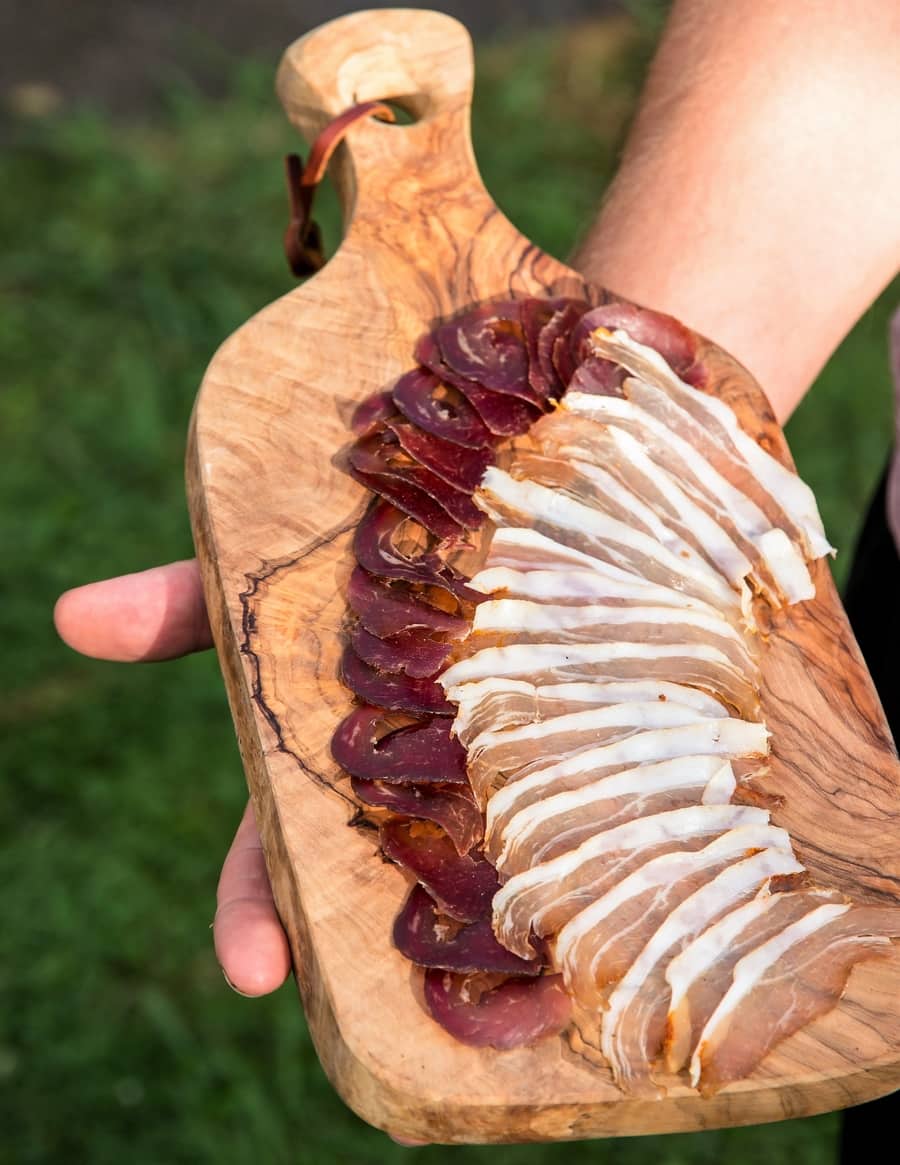Charcuterie boards are made of hardwoods that enhance the display of cured meats, preserved vegetables, cheeses, and other common components. These hardwood charcuterie boards are often made of acacia, hard maple, teak, olive & cherry.
Charcuterie boards should be made of hardwood, which enhances the presentation of dry-cured meats, preserved vegetables, and cheeses. This is a very traditional view, I know.
It’s interesting how charcuterie has come to mean different things over the years, but it should enhance the food on display and give an interesting background.
Generally speaking, charcuterie boards are mostly made of wood, and certain woods are used for that, too (but some alternatives that make sense are below).
And aspects like hardness, toxicity, food safety, and lifespan should be considered when choosing a board. I will go through some main points on these aspects below.
So keep that in mind, although the below I have picked take all of this into account to make it easier to decide.
One of the things that’s very important is the difference between softwood and hardwood. Softwood refers to Evergreen wood that generally has cones on the tree (and stays green throughout the year, hence the name).
Hardwood refers to trees that lose their leaves in winter. Hardwood is really what you want a charcuterie or cutting board made out of. It is hard-wearing because it doesn’t impart in funky flavors, and certain woods tick all those boxes of things you want on the board.
Since I have been involved in meat curing for around 20 years, I have seen many variations on many continents regarding an antipasto (here is an article on cured meats for classic antipasto) offering.
I would say less is more, just like all the thousands of adverts we’re exposed to daily. Too much of a good thing is just not enjoyable.

Having a charcuterie board that isn’t overloaded and highlights a few delicious things helps to focus attention on quality over quantity.
Suitable Wood for a Charcuterie Board
- Acacia
- Hard or Sugar Maple
- Teak
- Bamboo
- Black Walnut
(Many fruit & nut trees are suitable)
Providing a much more appreciative offering, rather than cramming as much as possible on a board and thinking this is appealing.
An array is probably more appropriate to describe what an overloaded charcuterie board feels like. You can probably consider an array with a little bit of everything. If you haven’t heard of an array, it’s a Scandinavian buffet-style offering of many different dishes together on the table. This is a little judgemental, but that’s my humble opinion.
Even though charcuterie is traditionally a French term (to do with offal, rillettes, pates, and very funky French sausages, Andouillette de Troyes Sausage, the modern interpretation of the charcuterie board seems to encapsulate a type of cured meat, fine cheeses, figs, grapes or preserved vegetables, like a platter or Italian antipasto type of offering.

So, I will highlight some of the most popular and stylish things that a wooden charcuterie board is made of and give some suggestions if you’re in the market for one.
Charcuterie boards can be made of many types of wood; some are ideal, and some you want to avoid, which I will list below.

So here are my favorites for wood charcuterie boards that enhance food displays and give you a decent lifespan. They are food-safe and have a good hardness rating, so they don’t easily scratch. Later on, below are a few slate ones I love and why (dishwasher safe is a biggy).
These woods are antibacterial & antimicrobial. It’s a bit wild, but these woods have some natural antibacterial properties.
Factors to Consider for Choosing a Charcuterie Board
Here are some useful details:
- Woods to Avoid
- Oil and Charcuterie Boards
- Lacquer & Finishes
- Hardness of Wood
- Less is More
- Feed for a Charcuterie Board
- Slate and Marble Options
Charcuterie Board Wood to Avoid
- Mahagony
- Cedar
- Cypress
- Fir
- Brazilian Walnut
(As mentioned, anything that has cones on it is not suitable)
Wooden Charcuterie Boards & Oil
You can use some of these generally better-avoided woods, but it gets a bit more complicated because you must use food-safe oils or wax to create a seal.
I would advise just avoiding these complications and keeping it simple.
Lacuqer & Finishes
Any board with a mirror or shiny finish can look great but is ornamental. These are very unnatural chemically and not to be used for food.
Hardness of Wood for Charcuterie Boards
There is a hardness rating for all woods, and it comes into play; it’s the same as choosing a cutting board. We want a board that is not too soft and not too hard.
Balsa wood is one of the softest woods and has a Janke rating 22; the superhard boards have a rating of four or 5000. To give you an idea of scale.
Many of the most popular charcuterie boards are made of cherry (1,000), approx)), walnut (1,000), bamboo (1,200), maple (1,400).
Less is More
The other thing you should remember is that the main event of a charcuterie board will always be the cured meats and the fine cheeses used.
And if this is used in abundance, it doesn’t seem that special. Things that should be appreciated but are generally scarce worldwide must be savored.
Having Feet on a Charcuterie Board

This may seem relatively trivial, but there is some practicality, and thus.
Presenting something with some get-in between the surface and the board is lovely. But more, it’s about the practicality of drying it.
Because airflow can go all around the board, it is slightly elevated with some little feet.
Dish Washer Safe Charcuterie Boards
If you don’t already know, no wood board should be placed in a high-heat, concentrated detergent area like your dishwasher.
Ideally avoided but still part of our living environment, plastic is considered okay in a dishwasher but doesn’t make a lovely charcuterie board.
Although it’s scary, the research is happening on microplastics in our food and water, and we are breathing too, maybe!
Slate is dishwasher-friendly, so it’s a good choice if you want that convenience.
Slate & Marble Charcuterie Boards
There are a lot of alternatives as well – which can be very useful depending on what you want.
Marble is mainly used for cheese and cured meats. However, there is a lot of variation in marble, and one would have to be keen on marble to present the charcuterie on it (it is too heavy for my liking).
Granite has been around for a while, but honestly, I don’t know much about it and haven’t used it, so I prefer not to comment on it.
Then we have the mighty slate, which you see a fair bit now around restaurants all across the globe. It’s used in fine dining and other molecular restaurants (you know, the places that deconstruct food, then reconstruct it into a foam or something, to be honest, not my cup of tea).
But they do represent something quite interesting in terms of an excellent dark background, and you can see here in this example that it’s quite a contrast when you put food with some color on the start background (this is one of my favorites).
With knives and chalk, this is quite the set for under $40!
Recommendations for Charcuterie Boards
Slate Cheese Board Set 9 pc
My father was a marketing guru, and I remember his marketing program design was pure black with white writing to make it stand out. So you get a real contrast.
It can also be written on with chalk, which can be incredibly useful when you have hard-to-remember fancy, unpasteurized local cheeses with quirky names!
All-Rounder Decent Size- Black Walnut Charcuterie Board
Okay, here it is—the dream board. I gave this as a present and regret it; I wanted to keep it! But when I saw it, it had so much class.
If you are willing to invest, this black walnut board will serve you, your family, and your friends for many years. It’s reversible, too, and has a grove for cracks in the lighter section of the wood.
Compact All-Rounder – Olive Wood Charcuterie Board

I love the grains and detail of olive wood – it has so much to offer over most other woods. And it’s a fitting match for a charcuterie board. Olive wood boards are generally small to moderate, like 20″ tops.

Tom Mueller
For decades, immersed in studying, working, learning, and teaching the craft of meat curing, sharing the passion and showcasing the world of charcuterie and smoked meat. Read More

30 minutes ago I had no idea what a charcuterie board was. Then one of my favorite YouTubers was putting a few together for Christmas gifts. She was using slate and making small logos for the bottom right side. To me they almost looked like a large mouse pad lol. Thanks for taking the time to educate alot of us especially about the dangers of using certain woods.
Glad to help! 🙂 Next step make your own cured charcuterie! Have a look at my course, its been a ton of work – but very rewarding to share.
Thank you for all this interesting information. I love the slate cheese board idea!
Thanks, jus dont drop it 🙂 All the best, Tom